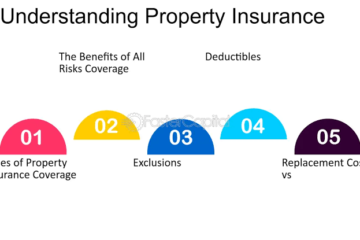The behavioral assessment provides valuable insights into human behavior. It helps examine personality traits, communication styles, and motivations that offer a deeper understanding of why people act the way they do. Behavioral assessment plays a crucial role in pre-employment testing as it helps improve team dynamics and optimize leadership roles.
Understanding Behavioral Assessments
Behavioral assessment is used to evaluate an individual’s skills, traits, and potential. It provides insights into how a person may react, behave, and interact with others. Analyzing the responses to specific questions in behavioral assessment during pre-employment testing helps organizations gain a deeper understanding of the candidate’s personality and suitability for a particular role.
Hence, employers often use this assessment to determine if a candidate aligns with the organization’s culture and job requirements. It also helps team building by highlighting the complementary skills and personalities within a group.
How Behavioral Assessment Works?
Behavioral assessment usually includes surveys, questionnaires, or simulations that prompt individuals to respond to various scenarios. The responses of the candidates are analyzed based on established criteria and generate insights into the behavioral tendencies of the individuals. The assessment may involve questions about problem-solving, communication style, and decision-making.
The responses of the candidates are analyzed based on predefined benchmarks to assess compatibility with specific roles or environments. Organizations from behavioral assessment then use this data to make informed decisions about recruitment, professional development initiatives, and team dynamics. Understanding how individuals are likely to behave in certain situations helps employers create more effective teams and foster a positive work environment.
Methods of Behavioural Assessments
There are several types of behavioral assessment tools, each serving a specific purpose.
- Direct observation: This type of assessment involves observing the individual’s behavior in real-time and recording the specific behavior of interest.
- Self-report measures: This involves individuals reporting their own behavior through questionnaires, surveys, and interviews.
Importance of Behavioral Assessments in Hiring
Behavioral assessments have become popular tools in the hiring process as they offer insight beyond the resume and traditional interviews. This helps the employers to gain insights into the teh candidate’s:
- Work style: How they handle pressure, approach tasks, and make decisions.
- Soft skills: Teamwork, communication, leadership, problem-solving.
- Cultural fit: This involves alignment with the work environment and company values.
Behavioral assessments help with:
- Improved candidate selection: This includes focusing on past behaviors that predict future performance. The employer can identify candidates with the right skills for the job.
- Structured interviews: Behavioral assessments provide a framework for asking consistent and relevant questions, thus leading to fairer comparisons.
- Reduced bias: This assessment helps mitigate unconscious bias in the hiring process by focusing on objective criteria.
- Increased efficiency: Identifying string candidates in the early stage saves time and resources during the hiring process.
Therefore, behavioral assessment can be a valuable tool for hiring managers seeking to make data-driven decisions and build high-performance teams. These assessments play a crucial role in understanding employees’ personalities, communication preferences, and work styles. Many employers use this tool during the hiring process to evaluate the suitability of a candidate for specific roles.
By assessing traits like leadership, teamwork, and problem-solving skills, employers can make informed decisions about team dynamics and recruitment. It helps assess the candidate’s compatibility with job requirements, improve team collaboration and productivity, and identify potential areas for development.
Behavioral assessment also helps organizations build a diverse team by ensuring that individuals with different strengths and perspectives come together. This helps promote a culture of understanding and appreciation for diverse personalities, thus helping organizations foster innovation and creativity within their workforce.
What Goes Into Conducting a Behavioral Assessment?
- Planning the process: First, you need to identify the purpose and goals of the assessment to ensure their alignment with organizational objectives. The next step is to determine the target audience and choose appropriate assessment tools based on teh requirements. Make sure you consider a detailed timeline that outlines each step of the assessment and allocate resources effectively.
- Gathering data: Collect data through various methods, such as interviews, surveys, and observations, and ensure anonymity and confidentiality. Most behavioral assessment tools utilize a mix of quantitative and qualitative data to gain a comprehensive understanding of behaviors.
- Analyzing results: identity patterns, correlations, and themes, as well as making use of statistical software to analyze quantitative data for accurate trends. Consider both the overarching patterns and individual behaviors and generate a detailed report highlighting key findings.
Best Practices for Behavioral Assessments
- Make use of a variety of assessment tools to gather comprehensive data and ensure an adaptable evaluation process.
- Implement clear assessment objectives to obtain valuable insights into individual behaviors.
- Regularly update and refine your methods so that they align with evolving organizational needs.
- Encourage open communication regarding the purpose and outcomes of assessments.
- Maintain fairness and objectivity by establishing consistent assessment criteria.
Bottom Line
Behavioral assessments allow employers to make informed decisions across various settings, thus offering improved outcomes and a better understanding of behaviors. Using these tools effectively can provide valuable insights to achieve better outcomes.
Keep an eye for more news & updates on Times Analysis!



